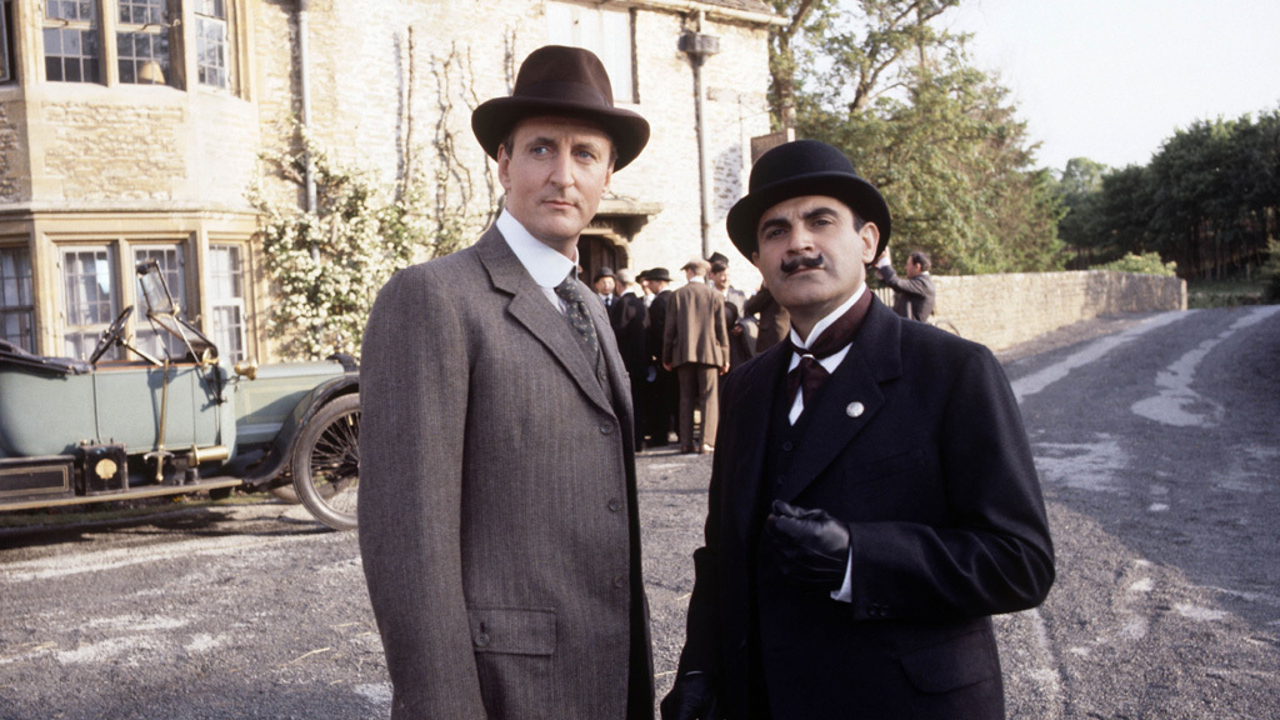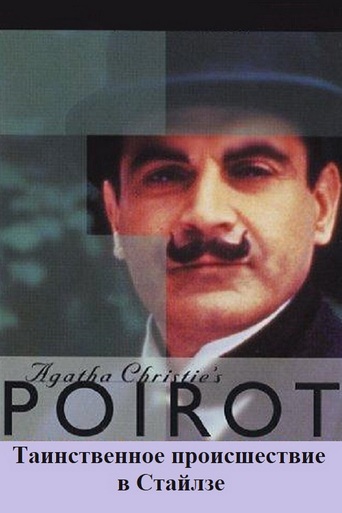



the audience applauded
Pretty Good
Lack of good storyline.
Fantastic!
The Mysterious Affair at Styles is a very good example of early Poirot, it's a very good story, but it's the character play and development that's key to the success here. I often think it would have been nice if they'd have run this as a pilot, to set the characters up, and explain Poirot's back story, but it fits in really well nonetheless.It's a wonderfully cosy British murder mystery, you can almost hear the clink of ice in jugs of iced tea. It doesn't have the excitement of many late episodes, but it's still a very enjoyable episode. I really enjoy Michael Cronin's Alfred Inglethorpe and Joanna McCallum's Evie Howard, but the acting in general is excellent. The production values are superb.I know the solution does seem a little far fetched, but it's still cleverly devised, you just need to stretch your imagination a little.
View More'The Mysterious Affair at Styles' is the first Poirot story. However as this is the feature length story marking the beginning of the the third season, it almost serves as a prequel.The action moves to 1917, the great war is still raging. Lieutenant Hastings has been wounded and also maybe shell shocked. He is invited by an old friend John Cavendish (David Rintoul) to stay at his vast estate, Styles Court to recuperate. Along the way Hastings is told that John's mother has married Albert Ingelthorpe (Michael Cronin) who is 20 years younger than her. The motive for the marriage can only be money.In the nearby village Hastings encounters a man who he once met, Hercules Poirot who is a Belgian refugee.Later that night John's mother dies, it is poison. Hastings has no option but to call in Poirot, the man who he once helped in an investigation.The obvious culprit is Albert Ingelthorpe who is silent about his whereabouts and who also purchased some poison for a dog. However Poirot is convinced that Ingelthorpe might have a watertight alibi even though he has motive compared to others in the household.A generation of schoolchildren at the time might have been confused that PE teacher, Mr Baxter from Grange Hill cannot surely be the baddie. As we have gone back in time Suchet's Poirot has more hair. Unfortunately little is done make Hastings and Japp look younger.As I have said about the previous early episodes of Poirot, the art and set decoration is sumptuous. There are just some wonderful scenes with a huge hanging painting as some people walk down the stairs of some government building. There are short scenes which require period detail, costumes, sets and extras. Money was thrown into this series.However it did feel a bit overlong and the reasons that Poirot deduced to catch the culprit was rather weak. It is a locked room mystery but one where the killer has written down the incriminating evidence.
View MoreThis was the first mystery story that Agatha Christie ever wrote. Reasonably faithfully depicted here, it is an entertaining if straightforward retelling of what happened when Captain Hastings, recovering from a war wound in 1917, finds himself visiting the estate of an old friend in the village of Styles St. Mary. The same village where, coincidentally, Hastings's acquaintance Poirot has been living for the last 4 years, along with 7 other Belgian war refugees. When Poirot's benefactor, Mrs. Inglethorp dies mysteriously one night, Poirot and Hastings work together to investigate the matter.The story is helped along by some minor touches of humor, especially the scene where a young woman appeals to Hastings for advice, and Hastings impulsively proposes marriage to her. This story, outside of simply being the first Christie novel, is also noted for having her first rather shocking final revelation, one that here is so shocking that the final confession "All right, we love each other!" looks really too ridiculous to be believed. But overall, the period detail is wonderful to behold, and Suchet and company as usual do an excellent job.
View MoreUnlike the other episodes I've seen, this one is set during the Great War, after one of the battles at Ypres. (Kids, that's pronounced EEP-rah. Well, kind of. The Great War ran its course from 1914 to 1918 -- AD -- and was fought before we learned to start numbering them. The result of the battle was a pile of dead and mangled bodies on both sides. PS: The English were fighting the Germans.) It's surprising to see characters waltzing around in wardrobe a la mode 1915. Many of the ladies had long flowing dresses that swept the floor when they walked. They wore high lace collars and often their hair was swept up on their heads in a configuration resembling that of a soccer ball or some kind of Gugelhupf.The costumes, cars, and many props are of the period. Some props must have been carried over from the episodes set in the 1930s -- books and knick knacks -- but the producers must have dug deep to come up with so much new in the way of forms. I'd always thought of the BBC's Poirot productions as having some kind of massive chest of 1930s objects into which they dug for props and clothes. Now I have to add a massive chest for their period romances and even for their adaptations of Dickens. They had to put the 1935 bus away in the garage and dust off the 1914 model, for instance.I'd like to add that wardrobe and props tend to be precise about these things. I had a prominent role in "The Road To Wellville." You can see the back of my head in the scene in which the kid farts in church. That scene was set in 1895. Another scene was set ten years later, and they had different sets of SHOES for the extras, depending on the date.As far as this movie is concerned, I rather enjoyed it. True, I got some of the characters and their names mixed up. I usually do. These ensemble mysteries could actually benefit from the use of familiar faces, as Albert Finney' "Murder on the Orient Express" did. However, Poirot's climactic explanation and the dénouement wrapped things up nicely. There isn't really a dull moment.
View More